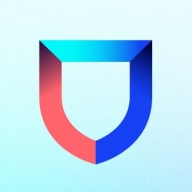


Lacework FortiCNAPP and AWS GuardDuty are security solutions competing in cloud security management, with both offering distinct features catered towards enhancing security postures. Lacework FortiCNAPP seems to have the upper hand in proactive customer support and compliance capabilities, while AWS GuardDuty excels in integrated AWS environment monitoring and cost-effectiveness.
Features: Lacework FortiCNAPP offers robust anomaly detection, intuitive security compliance reports aligning with CIS and NIST 800-53, and seamless alert management functionalities. AWS GuardDuty is noted for behavior analysis, active threat monitoring in AWS environments, and comprehensive intrusion detection capabilities.
Room for Improvement: Lacework FortiCNAPP could enhance IAM security controls and data governance, along with better integration with collaboration tools like Slack and Datadog. AWS GuardDuty could improve cost-efficiency and dashboard analytics, as well as provide clearer presentations of findings in container environments.
Ease of Deployment and Customer Service: Both Lacework FortiCNAPP and AWS GuardDuty offer flexible deployment options in cloud environments. Lacework is praised for proactive and responsive customer support via Slack, whereas AWS GuardDuty provides satisfactory customer service but lacks proactive engagement.
Pricing and ROI: Lacework uses an adaptable "Lacework unit" pricing model offering ROI by reducing manual monitoring efforts, though it may appear expensive. AWS GuardDuty's pay-as-you-go model, based on data usage, is perceived as cost-effective, with pricing proportional to data activity levels, making it affordable while ensuring good ROI.
The detailed information PingSafe gives about how to fix vulnerabilities reduces the time spent on remediation by about 70 to 80 percent.
After implementing SentinelOne, it takes about five to seven minutes.
Cloud Native Security does offer ROI.
When we send an email, they respond quickly and proactively provide solutions.
They took direct responsibility for the system and could solve queries quickly.
Having a reliable team ready and willing to assist with any issues is essential.
I rate technical support for AWS GuardDuty as ten out of ten; AWS has very good security support overall.
I appreciate the support for AWS; it is relatively fast, and their SLAs meet my needs.
Technical support from Fortinet is good; I get feedback and responses quickly.
I would rate it a 10 out of 10 for scalability.
Scalability is no longer a concern because Cloud Native Security is a fully cloud-based resource.
I would rate the scalability of PingSafe 10 out of 10.
It is designed to scale based on usage, which makes it very adaptable for varying demands.
It's a reliable solution that the organization is increasingly adopting for its robust features and security.
We contacted Cloud Native Security, and they addressed it in a day.
The only downtime we had was when switching from V1 to V2 but it was smooth.
The stability of GuardDuty is extremely reliable.
It is backed by machine learning, and AWS has strong machine learning models and the capacity to support this with advanced computing power.
If they can merge Kubernetes Security with other modules related to Kubernetes, that would help us to get more modules in the current subscription.
As organizations move to the cloud, a cloud posture management tool that offers complete cloud visibility becomes crucial for maintaining compliance.
I would also like to see Cloud Native Security offer APIs that allow us to directly build dashboards within the platform.
A unified dashboard that aggregates findings across all regions without requiring manual aggregation could enhance convenience for users.
Further integration with services like API Gateway would be beneficial.
Comparing AWS GuardDuty to similar products from Microsoft, Microsoft has a product called Sentinel, which is a completely integrated solution that basically does everything from vulnerability management to managing log analytics.
The vulnerability part is not systematically organized; it is all clumsy in the web UI, and it is not user-friendly.
I believe the enterprise version costs around $55 per user per year.
There are some tools that are double the cost of Cloud Native Security.
I recall Cloud Native Security charging a slightly higher premium previously.
GuardDuty is very cheap and operates on a pay-as-you-go basis.
The pricing of this tool is cheaper compared to other tools from other vendors, which are more expensive.
AWS GuardDuty is an expensive feature
This helps visualize potential attack paths and even suggests attack paths a malicious actor might take.
The infrastructure-as-code feature is helpful for discovering open ports in some of the modules.
This tool has been helpful for us. It allows us to search for vulnerabilities and provides evidence directly on the screen.
It notifies you immediately when something goes wrong, allowing quick response to threats.
Enabling GuardDuty with a single click allows it to start analyzing data for threats without requiring additional software deployment or updates.
The great benefits of using AWS GuardDuty are that it is connected to all ecosystems from the AWS environment, and I can detect threats faster and locate all the information in a single tool.
The machine learning capability in Lacework FortiCNAPP is used for threat detection.
| Product | Market Share (%) |
|---|---|
| AWS GuardDuty | 13.2% |
| SentinelOne Singularity Cloud Security | 3.7% |
| Lacework FortiCNAPP | 2.3% |
| Other | 80.8% |



| Company Size | Count |
|---|---|
| Small Business | 46 |
| Midsize Enterprise | 20 |
| Large Enterprise | 53 |
| Company Size | Count |
|---|---|
| Small Business | 8 |
| Midsize Enterprise | 3 |
| Large Enterprise | 15 |
| Company Size | Count |
|---|---|
| Small Business | 4 |
| Midsize Enterprise | 4 |
| Large Enterprise | 4 |
SentinelOne Singularity Cloud Security offers a streamlined approach to cloud security with intuitive operation and strong integration capabilities for heightened threat detection and remediation efficiency.
Singularity Cloud Security stands out for its real-time detection and response, effectively minimizing detection and remediation timelines. Its automated remediation integrates smoothly with third-party tools enhancing operational efficiency. The comprehensive console ensures visibility and support for forensic investigations. Seamless platform integration and robust support for innovation are notable advantages. Areas for development include improved search functionality, affordability, better firewall capabilities for remote users, stable agents, comprehensive reporting, and efficient third-party integrations. Clarity in the interface, responsive support, and real-time alerting need enhancement, with a call for more automation and customization. Better scalability and cost-effective integration without compromising capabilities are desired.
What are SentinelOne Singularity Cloud Security's standout features?SentinelOne Singularity Cloud Security is deployed in industries needing robust cloud security posture management, endpoint protection, and threat hunting. Utilized frequently across AWS and Azure, it assists in monitoring, threat detection, and maintaining compliance in diverse environments while providing real-time alerts and recommendations for proactive threat management.
Amazon Guard Duty is a continuous cloud security monitoring service that consistently monitors and administers several data sources. These include AWS CloudTrail data events for EKS (Elastic Kubernetes Service) audit logs, VPC (Virtual Private Cloud) flow logs, DNS (Domain Name System) logs, S3 (Simple Cloud Storage), and AWS CloudTrail event logs.
Amazon GuardDuty intuitively uses threat intelligence data - such as lists of malicious domains and IP addresses - and ML (machine learning) to quickly discover suspicious and problematic activity in a user's AWS ecosystem. Activities may include concerns such as interactions with malicious IP addresses or domains, exposed credentials usage, or changes and/or escalation of privileges.
GuardDuty is able to easily determine problematic AWS EC2 (Elastic Compute Cloud) instances delivering malware or mining bitcoin. It is also able to trace AWS account access history for evidence of destabilization. such as suspicious API calls resulting in changing password policies to minimize password strength or anomalous infrastructure deployments in new or different never-used regions.
GuardDuty will continually alert users regarding their AWS environment status and will send the security discoveries to the GuardDuty dashboard or Amazon CloudWatch events for users to view.
Users can access GuardDuty via:
Amazon Elastic Kubernetes Service (Amazon EKS)
Kubernetes protection is an optional add-on in Amazon GuardDuty. This tool is able to discover malicious behavior and possible destabilization of an organization's Kubernetes clusters inside of Amazon Elastic Kubernetes Service (Amazon EKS).
When Amazon EKS is activated, GuardDuty will actively use various data sources to discover potential risks against Kubernetes API. When Kubernetes protection is enabled, GuardDuty uses optional data sources to detect threats against Kubernetes API.
Kubernetes audit logs are a Kubernetes feature that captures historical API activity from applications, the control plane, users, and endpoints. GuardDuty collates these logs from Amazon EKS to create Kubernetes discoveries for the organization's Amazon EKS assets; there is no need to store or turn on the logs.
As long as Kubernetes protection remains activated, GuardDuty will continuously dissect Kubernetes data sources from the Amazon EKS clusters to ensure no suspicious or anomalous behavior is taking place.
Amazon Simple Cloud Storage (S3) Protection
Amazon S3 allows Amazon GuardDuty to actively audit object-level API processes to discover possible security threats to data inside an organization's S3 buckets. GuardDuty continually audits risk to the organization’s S3 assets by carefully dissecting AWS CloudTrail management events and AWS CloudTrail S3 data events. These tools are continually auditing various CloudTrail management events for potential suspicious activities that affect S3 buckets, such as PutBucketReplication, DeleteBucket, ListBucket, and data events for S3 object-level API processes, such as PutObject, GetObject, ListObject, and DeleteObject.
Reviews from Real Users
“The most valuable features are the single system for data collection and the alert mechanisms. Prior to using GuardDuty, we had multiple systems to collect data and put it in a centralized location so we could look into it. Now we don't need to do that anymore as GuardDuty does it for us.” - Arunkumar A., Information Security Manager at Tata Consultancy Services
Lacework FortiCNAPP provides robust cloud security, combining vulnerability management and multi-cloud insight with user-friendly controls, machine learning detection, and compliance support.
Lacework FortiCNAPP specializes in cloud security by merging machine learning anomaly detection with agent-based vulnerability management to offer detailed alerts and compliance reports. Its comprehensive approach allows continuous monitoring across AWS and Kubernetes, providing insights from an attacker's perspective. The platform offers automation and seamless Slack integration, facilitating collaborative and efficient cloud security management. Users value its ability to handle multi-cloud environments and scan IAC scripts, configurations, and compute nodes across AWS and GCP.
What are the key features?Organizations across sectors leverage Lacework FortiCNAPP for cloud security, focusing on compliance, security posture, and vulnerability management. It is widely used for monitoring AWS and Kubernetes environments, scanning IAC scripts, configurations, and securing compute nodes. It supports multi-cloud security posture management and log ingestion, enabling companies to maintain strong cloud infrastructures without dedicated security layers.
We monitor all Cloud Workload Protection Platforms (CWPP) reviews to prevent fraudulent reviews and keep review quality high. We do not post reviews by company employees or direct competitors. We validate each review for authenticity via cross-reference with LinkedIn, and personal follow-up with the reviewer when necessary.